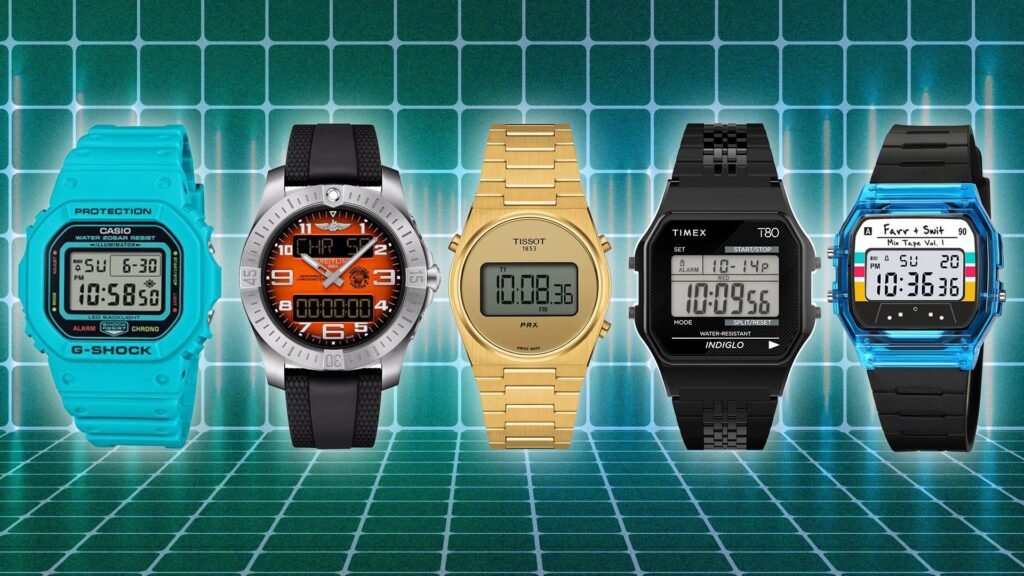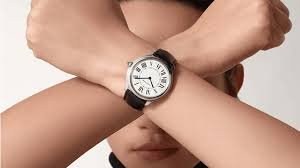Choosing your first watch is more than just a purchase; it’s an exciting step toward expressing your style and personality. With so many options available—luxury brands, smartwatches, analog pieces, or mechanical marvels—the process can feel overwhelming. But don’t worry, this ultimate guide will walk you through everything you need to consider to make an informed choice.
Whether you’re a watch enthusiast, a fashion lover, or simply someone looking for a timeless piece, this guide is for you. We’ll cover the factors to keep in mind when selecting your first watch, common mistakes to avoid, and even answer some frequently asked questions at the end.
Table of Contents
Why Owning a Watch Still MattersWhile many people rely on their phones to check the time, watches remain a popular accessory—and for good reason. Beyond telling time, a carefully chosen watch reflects your taste, enhances your outfit, and can even serve as a personal statement.
Watches also provide functionality, from the sturdy resilience of a diver’s watch to the precision of a chronograph. Whether you’re dressing up for a formal event or hitting the gym, there’s a watch built to fit every occasion and lifestyle.
What to Consider Before Buying Your First Watch
1. Set a Budget
Start by determining how much you’re willing to spend. Setting a clear budget can narrow down your options while ensuring you get the best value within your price range. Watches are available in a huge range of prices:
- Entry-Level Watches ($50 – $500): Ideal for first-time buyers looking for affordable yet stylish and durable options.
- Mid-Range Watches ($500 – $3000): Perfect for those wanting a quality timepiece that offers a balance between craftsmanship and price.
- Luxury Watches ($3000 and Up): Renowned brands like Rolex, Omega, and Patek Philippe dominate this segment, offering exceptional materials, mechanics, and prestige.
2. Understand Different Types of Watches
Watches come in various styles and functionalities, so it’s important to understand the main categories to decide what suits your preferences and needs:
- Analog Watches – Timeless and classic, these watches have a traditional dial with hour and minute hands.
- Digital Watches – Great for sporty and casual setups, digital watches offer easy-to-read numbers and modern features.
- Automatic & Mechanical Watches – A favorite for enthusiasts, these watches contain intricate internal movements powered by springs or the movement of your hand.
- Smartwatches – Tech-savvy and practical, smartwatches sync with your smartphone, offering fitness tracking and notifications.
- Hybrid Watches – A mix of the traditional look of analog watches with the smart features of tech-based devices.

3. Choose a Style That Matches Your Personality
Your watch is an extension of your personal style, so make it count. Do you prefer the elegant minimalism of a dress watch, the rugged appeal of a sports watch, or something modern and tech-forward?
Here’s a quick breakdown based on popular styles:
- Dress Watches – Thin and sleek, great for formal wear.
- Field or Pilot Watches – Functional and sturdy.
- Dive Watches – Water-resistant and perfect for sporty vibes.
- Everyday Watches – A versatile blend of casual and minimal designs.
4. Consider Watch Material
Different materials can affect your watch’s weight, appearance, and durability:
- Stainless Steel – Durable, rust-proof, and versatile.
- Titanium – Lightweight yet strong, perfect for sports or outdoor activities.
- Gold & Platinum – Synonymous with luxury.
- Plastic or Resin – Ideal for casual and active everyday wear.
5. Learn About Movement Types
The “movement” of a watch refers to the mechanism that powers it. There are three primary types:
- Quartz: Powered by battery; known for accuracy and affordability.
- Automatic: Powered by wrist movement; no need for batteries.
- Mechanical: Traditional, intricate, and highly valued by collectors.
6. Focus on Features and Functionality
When buying your first watch, focus on practical features that best suit your lifestyle. Common features include water resistance, chronograph functions, date displays, and alarms. If you like outdoor adventures, go for a watch with a robust build and GPS.
7. Fit and Comfort
The size and fit of a watch play a major role in comfort. Pay attention to:
- Case Size – The diameter of the watch face, typically 38–42mm for men and 28–34mm for women, though preferences vary.
- Band Material – Leather for a classic touch, metal bracelets for durability, or silicone for sporty looks.
- Weight – Lightweight watches add comfort, while heavier ones offer a more luxury feel.
8. Check Warranty and After-Sales Support
Lastly, ensure your chosen watch comes with a warranty and reliable after-sales support to protect your investment.
Common Mistakes to Avoid as a First-Time Watch Buyer
- Overlooking Research: Take your time to explore brands and reviews.
- Choosing Style Over Functionality: A good-looking watch is great, but ensure it meets your needs.
- Ignoring Maintenance Costs: Luxury watches may come with high maintenance fees.
- Buying on Impulse: Always make informed decisions rather than acting on sales pressure.
Recommended Beginner Watch Brands
Here are some trusted brands for various budgets:
| Brand | Price Range | Perfect For |
|---|---|---|
| Casio | $50 – $200 | Everyday wear and active lifestyles |
| Seiko | $100 – $500 | Quality and affordability |
| Citizen | $150 – $800 | Eco-friendly, solar-powered options |
| Hamilton | $500 – $2000 | Vintage-inspired automatic watches |
| Tissot | $300 – $1000 | Swiss-made watches with classic designs |
| Rolex | $5000+ | Luxury, iconic statement pieces |
FAQs About Buying Your First Watch
1. How much should I spend on my first watch?
It depends on your budget and preferences. Many high-quality entry-level options are available between $100–$500. However, investing in the $500–$2000 range could provide longer-lasting, premium options.
2. Is buying a luxury watch worth it?
If you view watches as an investment or enjoy the craftsmanship and heritage, a luxury watch is worth the splurge. For everyday use, high-quality mid-range models also perform exceptionally well.
3. Are smartwatches better than traditional watches?
It depends on your lifestyle. If you value connectivity and fitness tracking, smartwatches are great. Traditional watches offer timeless appeal and craftsmanship.
4. How do I know which size watch to buy?
A good rule of thumb is to choose a case size proportionate to your wrist. Try on different sizes to see what feels comfortable.
5. Where can I buy my first watch?
You can purchase watches at authorized dealers, brand stores, or online retailers. Just ensure you’re buying from a reputable source.
Create Your Timeless Look Today
Purchasing your first watch is an exciting milestone. By understanding your needs, exploring styles, and making an informed decision, you can find a timepiece that not only looks great but also stands the test of time.
Take your time to browse options, experiment with styles, and invest in a piece that truly resonates with you. Whether it’s a classic analog, a sporty digital, or a luxurious statement watch, your first timepiece is just the beginning of your watch collection.
Happy watch hunting!



2 Comments
Pingback: How to Buy Your First Watch | The Ultimate Beginner's Guide
Pingback: Essential Tips for Newcomers to Canada